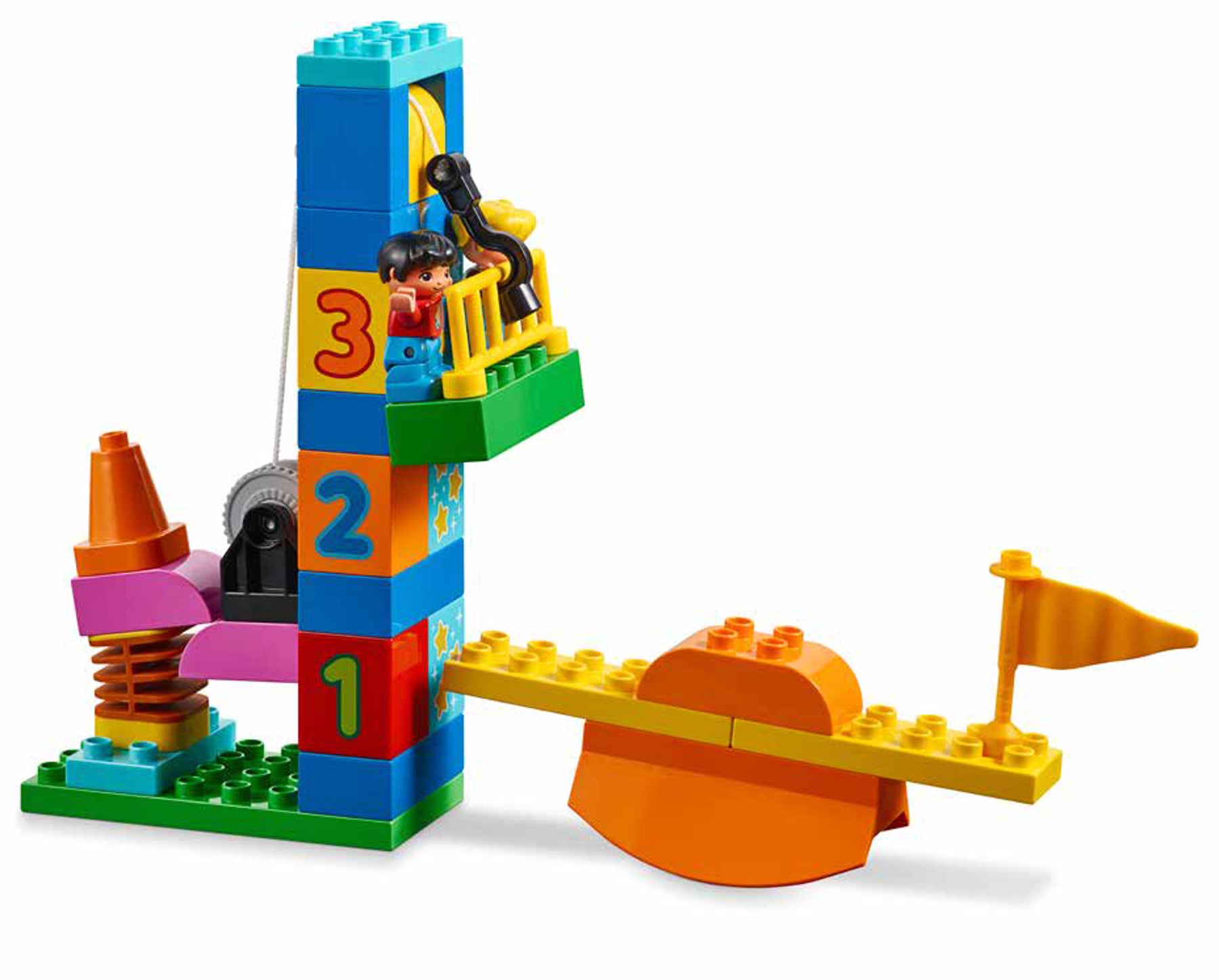Chain Reaction
In this lesson, children will learn about cause and effect by creating chain reactions.

Connect
Show the children the inspiration photo and ask them to describe what they see, then tell them that it shows a model of a ride called Free Fall.

Tell the children that you are going to read a story about a
boy and a girl who were visiting STEAM Park.
Explain that the story will describe a chain reaction, or a sequence of events
that is caused by a trigger.
Read the following story aloud:
Matt and Sienna decided to ride Free Fall, the scariest ride in STEAM Park. They waited in line for only a few minutes and then stepped onto the platform. The machine pulled the rope until they were at the top of the tower.
“Wow! We are way up high!” Matt said.
“I’m so excited to feel my stomach tickle! I wonder when it’s going to drop us,” Sienna said.
They looked at the view of the park as they waited for the fall. Then, the lever holding the rope in place moved and released it. Matt and Sienna screamed and laughed as they dropped. The platform landed on another lever and raised a flag.
“That was the best ride ever!” Sienna said.
“Let’s go again!” Matt said.
Consider asking questions like:
- What caused the platform to drop?
- What happened next?
Explain that the trigger to the sequence of events in the story is that the lever moved and released the rope, which caused the platform to drop. When the platform landed, it caused another event to happen, the raising of the flag. Tell the children that this sequence of events is called a chain reaction.
Construct
Ask the children to work in pairs to create a chain reaction. Remind them that one event should cause another event to happen.
Show them the inspiration photos for this lesson and ask them to think about how they could make an object move without touching it.

Tell them that they can build separate parts of the chain reaction and then put the model together and test it.
Tip:
You can assign which part each child or pair of children should build. The chain reaction triggers could include throwing the ball, shooting the dart from the cannon, or rolling the car down the ramp. The next part of the chain reaction could include knocking over a line of dominoes, making a gear move, or making the rocking element move.
Contemplate
Ask the children to share their chain reactions with the rest of the group.
Consider asking questions like:
- What was the first cause or trigger in your chain reaction?
- What was the first event in your chain reaction?
- What was the last event in your chain reaction?
- Did your chain reaction turn out the way you predicted? Why or why not?
Continue
Ask the children to combine their chain reactions to create one long chain reaction.
Assign a place in the classroom where they can assemble the long chain reaction, then ask them to take turns setting it off and making adjustments until it works.
Tip:
Have the children draw the chain reaction and number the events.
Did you notice?
Observing the following skills can help you monitor whether the children are developing the necessary competencies in science, technology, engineering, art, and math.
- Identifying cause and effect relationships
- Using technology such as simple gears and wheels in appropriate ways
- Asking questions about science and technology related concepts
- Experimenting/testing “what would happen if” questions
- Observing and describing what happens
교사 지원
Children will:
- Identify cause and effect
- Create their own chain reactions
Children are able to:
- Identify cause and effect relationships
- Use technology such as simple gears and wheels in appropriate ways
- Ask questions about science and technology related concepts
- Experiment/test “what would happen if” questions
- Observe and describe what happens




